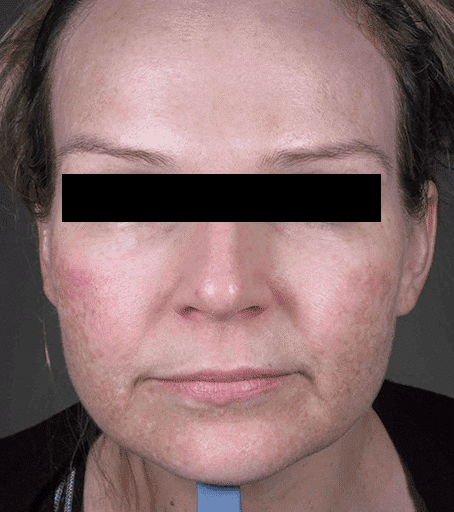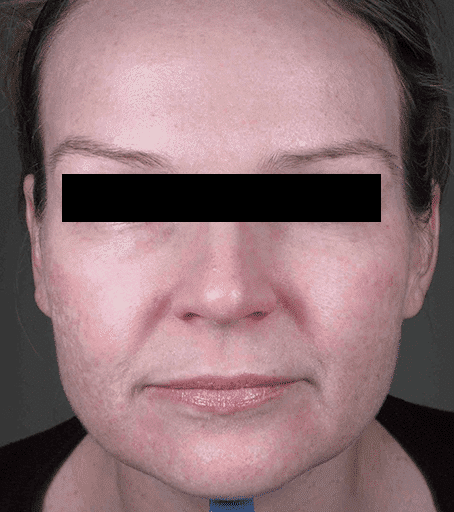
Simple microneedling can be an effective treatment if pigment cells are viable.Combining microneedling with creams that stimulate melanin production is recommended for best results.Lasers and Laser-Assisted Drug Delivery (LADD) can be utilized to increase pigment production in certain cases.










Scars typically manifest as changes in contour, color, or both. By addressing these factors, scars can be improved. In the case of hypopigmented scars on white skin, the objective of treatment is two-fold:
Therefore, in order to enhance the appearance of hypopigmented scars, attention must be given to these specific factors.

Hypopigmented or white scars are challenging to treat due to the absence or reduction of pigment cells called melanocytes. The only way to improve the pigment in these scars is by transferring new melanocytes or reactivating dormant ones within the scars.
Melanocytes comprise approximately one in every thirty-five cells in the basal layer of skin, and their primary function is to produce pigment that is then transferred to keratinocytes. In white scars, the number of melanocytes is typically reduced, resulting in a significant reduction or complete absence of pigment.

There are several ways to minimise the contrast between the surrounding skin and hypopigmented scars. Firstly, reducing tanning by applying sunscreen twice a day to unaffected areas can be effective. Additionally, using alpha-hydroxy acids (AHAs) such as glycolic or lactic acid creams and serums, as well as chemical peels, can help reduce contrast. Lasers such as picosecond laser and, fractional lasers may also be used to effectively reduce contrast.

Phototherapy is a medical treatment that utilises a specific band of light (UVB at 311 nm) to provide light therapy to areas of hypopigmentation. This type of therapy differs from traditional light sources as it concentrates on a single band of light, which can stimulate pigment cells and increase their output of melanin.
Phototherapy typically involves 2-3 sessions per week. It may take weeks to months to achieve optimal results.

Steroid Injections
Steroid or 5-FU injections help stop the excessive scarring process, causing the scar to shrink. However, thick or large scars can be difficult to inject evenly due to their firmness, often leading to patchy results.
Vascular Laser + Steroid Injections
Vascular lasers (e.g. PDL, KTP, Nd:YAG) shut down the blood supply that drives scar growth. For thinner scars, laser alone may be effective. For thicker scars, combining laser with steroid injections improves absorption and speeds up results, often requiring fewer sessions.
Fractional Ablative Lasers (CO₂, Erbium)
These lasers create micro-channels in the scar, stimulating skin remodelling and helping blend the scar with surrounding tissue. They also enhance steroid penetration in thicker scars.
Fully Ablative Laser (CO₂, Erbium)
Used to reduce the size of large, bulky scars. While not a standalone solution, it helps make the scar more responsive to follow-up treatments like laser and injections.

The number of laser sessions needed for treating hypopigmented scars can vary, typically ranging from 4 to 10 sessions. The exact number of sessions required depends on the extent of the hypopigmentation. Mild cases may require only 1-3 sessions, while more extensive areas may require additional sessions.
Laser treatment can stimulate melanin production by increasing the absorption of chemicals that stimulate melanocytes. Combining medical phototherapy with laser treatment can further enhance pigment production.

Yes, microneedling can be an effective treatment for white scars, sometimes simple treatments can be the most effective.
It's important to note that longer needles do not necessarily equate to better results. Pigment cells are located in the basal epidermal layer, and with adequate pressure, needles ranging from 0.1 to 0.2 mm can reach this layer. Microneedling is designed to deliver topicals and potentially release growth factors, cytokines, and chemokines to stimulate pigment cells.
For optimal pigmentation, 6-10 microneedling sessions may be necessary, provided that viable melanocytes are present in the area being treated.

Bimatoprost, also known as Lumigan 0.03%, comes in the form of eye drops and is primarily used to lengthen eyelashes. However, it can also stimulate pigmentation and may be used after microneedling to improve hypopigmentation.
It is important to note that in New Zealand, a prescription is required to obtain bimatoprost from any doctor.
For all appointment enquiries, medical referrals and urgent enquiries please contact us at info@scarsandlasers.co.nz or (09) 524 5011.
